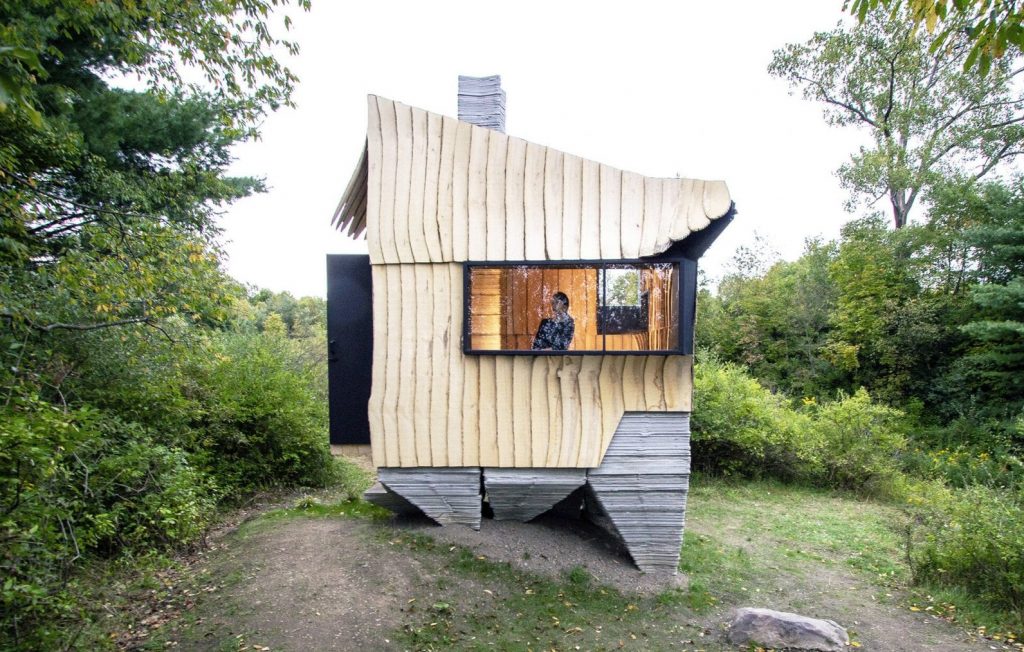
American architectural studio Hannah, in collaboration with students at Cornell University, created a small eco-home in upstate New York using 3D concrete printing.
Also in the design used substandard ash wood. The design, called Ashen Cabin, demonstrates the potential for using both types of materials to produce environmentally sustainable facilities.
An environmentally-friendly project demonstrates how substandard wood, in this case, infected with ash emerald gold beetles, can be used in combination with 3D printing to build a suburban home.
A small house stands on a printed concrete base consisting of truncated pyramids. Concrete is also present in other constructions, including in the high pipe of the steamer, in the base for the sunbed bench and on the floor of the hut. The rest of the exterior is lined with individually shaped wood panels, and the dwelling also has windows framed by plywood.
Typically, infected ash trees are left to decompose or burn, resulting in carbon dioxide emissions. Using a robotic arm equipped with a saw, the project developers were able to create a wooden cladding of irregular shape and, thus, find a use for wood, which otherwise would simply disappear.
There is no electricity or water in the house, there is only a small concrete washbasin and concrete bench, as well as a retractable plywood structure that can be used as a bed at night.
Picture Credit: Andy Chen, HANNAH
